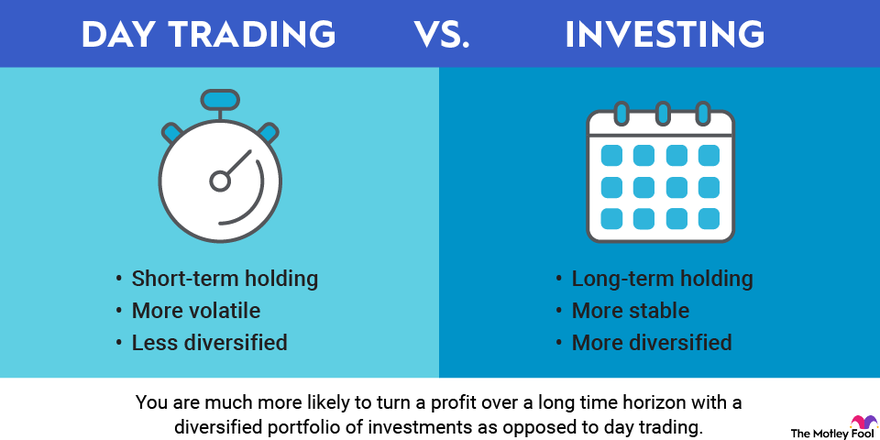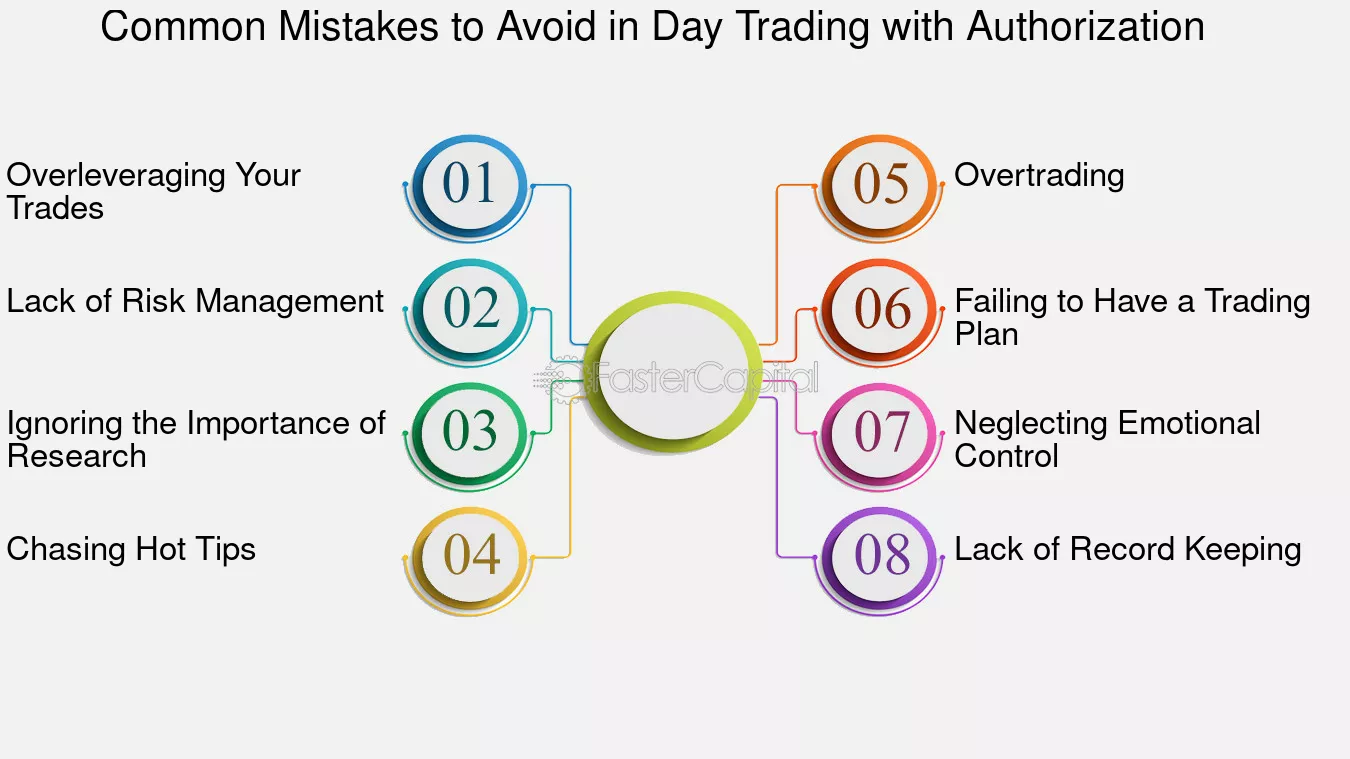Did you know that the average day trader spends more time researching stocks than a cat spends napping? In the fast-paced world of day trading, understanding key concepts is essential for success. This article breaks down what day trading is and how it works, explores essential strategies for beginners, and emphasizes the importance of risk management. You'll learn about common indicators, stock selection, and the critical role of technical analysis. Additionally, we’ll address the emotional aspects of trading, typical costs, and the intricacies of leverage. With insights on creating a successful trading plan, tax implications, and staying informed on market news, this guide equips you with the knowledge needed for your day trading journey. Join us at DayTradingBusiness for deeper insights and expert guidance!
What is day trading and how does it work?
Day trading is the practice of buying and selling financial instruments within the same trading day. Traders capitalize on small price movements by executing multiple trades, often using technical analysis and market trends. They typically rely on charts and indicators to make quick decisions. Leveraging tools like margin accounts can amplify profits, but it also increases risk. Successful day trading requires a solid understanding of market dynamics, discipline, and a well-defined strategy.
What are the essential day trading strategies for beginners?
1. Scalping: Focus on small price changes by making quick trades. This strategy requires fast execution and strict discipline.
2. Momentum Trading: Identify stocks or assets that are moving significantly in one direction. Buy when momentum builds and sell when it starts to fade.
3. Swing Trading: Hold positions for a few days to capture short-term price moves. Use technical analysis to find entry and exit points.
4. Technical Analysis: Use charts and indicators to make informed trading decisions. Learn to read patterns and signals.
5. Risk Management: Set stop-loss orders to limit potential losses. Only risk a small percentage of your capital on each trade.
6. News Trading: Trade based on news events that can cause volatility. Be aware of earnings reports, economic data, and geopolitical events.
7. Paper Trading: Practice with a simulated account to understand how strategies work without risking real money.
Start with these strategies to build a solid foundation in day trading.
How can I manage risk in day trading effectively?
To manage risk in day trading effectively, set a strict stop-loss order for each trade to limit losses. Keep your position size small, typically no more than 1-2% of your trading capital per trade. Diversify your trades to spread risk across different assets. Use a risk-reward ratio of at least 1:2, aiming for higher potential profits than losses. Stay disciplined and stick to your trading plan, adjusting it based on performance rather than emotions. Regularly review and analyze your trades to learn from mistakes and successes.
What are the most common day trading indicators?
The most common day trading indicators are:
1. Moving Averages: Simple Moving Average (SMA) and Exponential Moving Average (EMA) help identify trends.
2. Relative Strength Index (RSI): Measures momentum and identifies overbought or oversold conditions.
3. Bollinger Bands: Indicates volatility and potential price reversals.
4. MACD (Moving Average Convergence Divergence): Shows changes in momentum and trend direction.
5. Volume: Confirms trends and signals potential reversals when combined with price action.
6. Stochastic Oscillator: Compares a security's closing price to its price range, indicating potential reversal points.
These indicators help traders make informed decisions and manage risk effectively.
How do I choose the right stocks for day trading?
To choose the right stocks for day trading, focus on these key factors:
1. Liquidity: Select stocks with high trading volume. This ensures you can enter and exit positions quickly without significant price changes.
2. Volatility: Look for stocks with substantial price fluctuations. Higher volatility means greater potential for profit within a single day.
3. News Catalysts: Identify stocks that are affected by recent news, earnings reports, or other events. These can create sharp price movements.
4. Technical Indicators: Use charts and indicators like moving averages or RSI to spot trends and entry/exit points.
5. Market Conditions: Consider overall market trends. Bullish markets can favor certain stocks, while bearish conditions might require different strategies.
6. Personal Strategy: Align stock choices with your trading style and risk tolerance. Make sure you understand the stocks you trade.
By focusing on these elements, you'll improve your chances of successful day trading.
What is the importance of technical analysis in day trading?
Technical analysis is crucial in day trading because it helps traders identify price trends and market patterns. By analyzing charts and using indicators, traders can make informed decisions on entry and exit points. This approach enhances the ability to predict short-term price movements, manage risk, and maximize profits. Ultimately, technical analysis provides the data-driven insights necessary for successful day trading.
How do emotions impact day trading decisions?
Emotions significantly influence day trading decisions. Fear can lead to hesitation or panic selling, while greed may result in holding onto losing trades too long. Confidence can drive traders to take unnecessary risks. Emotional swings often cause impulsive decisions, leading to inconsistent strategies and potential losses. Successful day traders manage their emotions, using techniques like setting strict rules and maintaining a trading journal. This discipline helps them stay focused and make rational, informed choices, minimizing the negative impact of emotions on their trading outcomes.
What are the typical costs associated with day trading?

Typical costs associated with day trading include:
1. Brokerage Fees: Commissions for buying and selling stocks, which vary by broker. Some offer zero-commission trades.
2. Spreads: The difference between the buying and selling price of a stock, which can impact profitability.
3. Market Data Fees: Charges for real-time data feeds, often necessary for effective trading.
4. Margin Interest: If you're trading on margin, interest on borrowed funds can add up quickly.
5. Taxes: Short-term capital gains taxes apply to profits made within a year.
6. Software and Tools: Costs for trading platforms, charting software, and other analytical tools.
7. Withdrawal Fees: Some brokers charge for transferring funds out of your trading account.
These costs can significantly affect your overall profitability in day trading.
How can I create a successful day trading plan?
To create a successful day trading plan, follow these steps:
1. Define Your Goals: Set clear, achievable profit targets and risk tolerance levels.
2. Choose a Strategy: Decide on a trading strategy, such as scalping, momentum trading, or range trading.
3. Develop a Risk Management Plan: Determine how much of your capital you’re willing to risk on each trade, typically 1-2%.
4. Select Your Tools: Use reliable trading platforms and tools for charting, analysis, and execution.
5. Set Entry and Exit Rules: Clearly when to enter and exit trades based on your strategy.
6. Practice with a Demo Account: Test your plan in a simulated environment before risking real money.
7. Review and Adjust: Regularly analyze your trades, learn from mistakes, and refine your plan as needed.
Stay disciplined and stick to your plan to enhance your chances of success in day trading.
What tools and platforms are best for day trading?
The best tools and platforms for day trading include:
1. Trading Platforms: Thinkorswim, TradeStation, and Interactive Brokers offer advanced charting and analytics.
2. Brokerage Accounts: Look for brokers with low commissions and fast execution like Robinhood or E*TRADE.
3. Charting Software: Tools like TradingView provide real-time data and customizable charts.
4. News Aggregators: Use platforms like Benzinga or CNBC for up-to-date market news.
5. Stock Screeners: Finviz and Trade Ideas help identify potential trades based on specific criteria.
6. Mobile Apps: Apps from brokers allow trading on the go, ensuring you can act quickly.
Choose a combination that fits your trading style and goals.
How does leverage work in day trading?

Leverage in day trading allows traders to control a larger position with a smaller amount of capital. For example, if you have $1,000 and use 5:1 leverage, you can trade up to $5,000. It amplifies both potential profits and losses. If your trade gains value, your profits increase significantly; if it loses, you risk losing your entire investment quickly. Using leverage requires careful risk management to avoid margin calls or significant losses.
## What are the Essential Concepts of Day Trading?
Day trading is the practice of buying and selling financial instruments within the same trading day to capitalize on short-term market movements. Key concepts include using technical analysis, managing risk through stop-loss orders, and understanding market volatility. Day traders often focus on stocks, options, or forex to maximize profit potential.
Learn more about: What is Day Trading?
What are the tax implications of day trading profits?
Day trading profits are considered short-term capital gains and are taxed at your ordinary income tax rate. This means if you hold a stock for less than a year, any profit you make is taxed just like your regular income. You also need to report all your trades on your tax return, and excessive trading might classify you as a “trader” for tax purposes, allowing for different deductions. Additionally, be aware of wash sale rules, which can affect your losses and taxable gains.
Learn about Tax Implications of Forex Day Trading
How do I set realistic profit targets in day trading?
To set realistic profit targets in day trading, start by assessing your trading strategy and risk tolerance. Aim for a profit target that is 1-2 times your risk per trade; for example, if you're risking $100, target a profit of $100-$200. Analyze historical data to identify average price movements for the assets you trade. Set daily, weekly, and monthly targets based on your performance and market conditions. Keep your goals flexible and adjust them as you gain experience. Lastly, maintain disciplined risk management to protect your capital while pursuing profit targets.
Learn about How to Set Realistic Goals in Day Trading
What are the mistakes to avoid in day trading?

1. Lack of a Trading Plan: Entering trades without a clear strategy can lead to impulsive decisions.
2. Ignoring Risk Management: Failing to set stop-loss orders can result in significant losses.
3. Overtrading: Taking too many trades can increase transaction costs and reduce profitability.
4. Emotional Trading: Letting fear or greed drive decisions often leads to poor outcomes.
5. Neglecting Market Research: Not staying informed about market trends and news can cause missed opportunities.
6. Trading Without a Clear Exit Strategy: Not knowing when to take profits or cut losses can harm your results.
7. Using High Leverage: Over-leveraging can amplify losses and lead to margin calls.
8. Focusing on Short-Term Gains: Prioritizing quick profits over long-term strategy can lead to instability.
9. Skipping Proper Analysis: Relying solely on tips or rumors instead of conducting your own analysis can be detrimental.
10. Ignoring Trading Journals: Not tracking trades prevents learning from mistakes and improving performance.
How can I stay updated on market news for day trading?
To stay updated on market news for day trading, follow these strategies:
1. News Websites: Use financial news sites like Bloomberg, CNBC, and Reuters for real-time updates.
2. Social Media: Follow traders and financial analysts on Twitter and LinkedIn for insights and breaking news.
3. Market Apps: Download apps like Robinhood or Thinkorswim that provide news alerts and market analysis.
4. Newsletters: Subscribe to day trading newsletters for daily summaries and analysis.
5. Economic Calendars: Check economic calendars for upcoming reports that can impact market movements.
6. Trading Forums: Engage in trading communities on platforms like Reddit or Discord for shared news and tips.
7. Podcasts and Webinars: Listen to finance podcasts or attend webinars for expert commentary on market trends.
These methods will help you stay informed and make timely trading decisions.
Learn about How to Stay Updated on Crypto Market News for Day Trading
What role does market volatility play in day trading?
Market volatility is crucial in day trading because it creates opportunities for profit. Higher volatility means larger price swings, allowing traders to buy low and sell high within short time frames. It also increases the potential for quick losses, so effective risk management is essential. Traders often use volatility indicators to identify optimal entry and exit points, enhancing their chances of success.
Conclusion about Key Concepts in Day Trading Explained
In summary, mastering day trading requires a solid understanding of key concepts, strategies, and risk management techniques. By focusing on technical analysis, choosing the right stocks, and utilizing effective tools, traders can enhance their decision-making process. Additionally, staying informed about market news and being aware of emotional influences are crucial for success. With the right knowledge and support from experts like DayTradingBusiness, aspiring traders can navigate the complexities of day trading and work towards achieving their financial goals.
Sources:
- A method for automatic stock trading combining technical analysis ...
- Interest on Reserves: A Preliminary Analysis of Basic Options - April ...
- Do regulations work? A comprehensive analysis of price limits and ...
- Artificial intelligence techniques in financial trading: A systematic ...
- A Profitable Day Trading Strategy For The U.S. Equity Market by ...
- A Review of Fundamental and Technical Stock Analysis Techniques ...